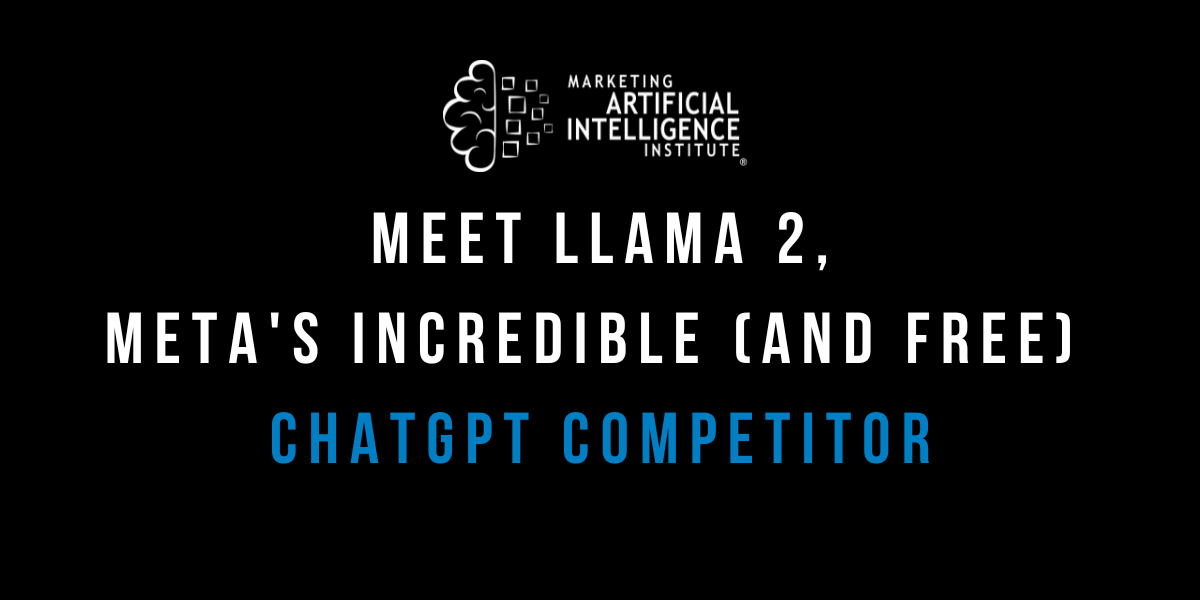Meta just made a big move with big implications for AI…
The company has announced that its new, powerful large language model—called LLaMA 2—will be available free of charge for research and commercial use.
This makes the model open source, which means anyone can copy it, build on top of it, remix it, and use it however they see fit.
Why it matters: There are a few reasons that LLaMA 2 is such a big deal.
- The move puts a powerful large language model into anyone’s hands and gives them the appropriate permissions to build products using it.
- It will also have impacts on AI safety. Some major AI players believe that the safest way to release AI is by carefully rolling it out and keeping tight control over models. Meta is taking the opposite approach, believing that getting this technology out in the world as fast as possible and putting it in the hands of as many people as possible is the safer route.
- The move is happening in partnership with Microsoft, which lends credibility to the rollout and gives Meta an unlikely ally in the AI race against other big tech giants.
Connecting the dots: On Episode 56 of the Marketing AI Show, I spoke with Marketing AI Institute founder/CEO Paul Roetzer about why LLaMA 2 matters and how it impacts business leaders.
- LLaMA 2 is one of the more powerful open source models available. Based on testing and feedback, Roetzer says LLaMA 2 is the most advanced open source model he’s seen. It’s on par with GPT-3.5 and can possibly compete in some cases with GPT-4.
- And the fact it’s open source is a big deal. “It definitely shakes up the whole industry from an open source perspective,” says Roetzer. This puts immense competitive pressure on non-open source players like OpenAI and Google.
- We’re already seeing the accelerating effects of open source AI. Even within a week of the announcement, there’s already been significant innovation as people build on top of LLaMA 2, showing just how fast open source AI can move.
- But it’s difficult to anticipate the consequences of open source AI. There’s no doubt that open source AI can accelerate innovation. But putting powerful AI technology in anyone’s hands may also accelerate misuse of it. Right now, we’re essentially running a live test of which approach, open or closed, is better—in public and in real-time.
What to do about it: The open source release of LLaMA 2 has some bigger implications for marketing and business leaders.
It’s just one more proof point that large language models are transforming the marketing and business landscape. As a leader, says Roetzer, you’re going to eventually be charged with figuring out how to infuse these models into marketing, sales, service, operations, HR, and every other aspect of your business.
This begs the question:
Open source models like LLaMA 2 are one option. Some organizations may find value customizing an open source model using their own data and keeping everything in-house.
Another solution is working with an application company (like a Writer or Jasper) who have access to different models and their own application layer that can be tailored to your needs.
Or, you can work directly with a company that builds large language models, like Cohere.
Unfortunately, there are no easy answers here.Roetzer says that right now there’s no definitive path for how to do this across the enterprise. And there’s no clear answer on whether or not open source or closed is best.
This makes the need for sound advice and counsel more important than ever.
“A lot of organizations are going to turn to their trusted advisors and consultants and say, ‘What do we do?’,” says Roetzer.
Don’t get left behind…
You can get ahead of AI-driven disruption—and fast—with our Piloting AI for Marketers course series, a series of 17 on-demand courses designed as a step-by-step learning journey for marketers and business leaders to increase productivity and performance with artificial intelligence.
The course series contains 7+ hours of learning, dozens of AI use cases and vendors, a collection of templates, course quizzes, a final exam, and a Professional Certificate upon completion.
After taking Piloting AI for Marketers, you’ll:
- Understand how to advance your career and transform your business with AI.
- Have 100+ use cases for AI in marketing—and learn how to identify and prioritize your own use cases.
- Discover 70+ AI vendors across different marketing categories that you can begin piloting today.
Mike Kaput
Mike Kaput is the Chief Content Officer at SmarterX and a leading voice on the application of AI in business. He is the co-author of Marketing Artificial Intelligence and co-host of The Artificial Intelligence Show podcast.



